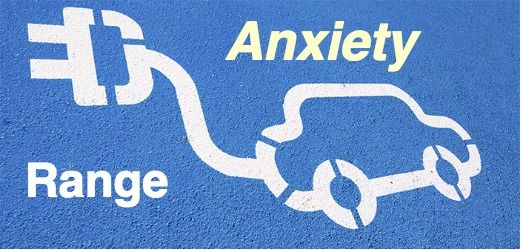EV range anxiety explained
Range anxiety is what an electric vehicle (EV) driver feels when the battery charge is low, and the usual sources of electricity are unavailable. It sparks a fear of getting stranded somewhere, which adds time, inconvenience, and stress to a journey


Range anxiety is what an electric vehicle (EV) driver feels when the battery charge is low, and when sources of electricity are unavailable. It sparks a fear of getting stranded somewhere, which adds time, inconvenience, and stress to a journey. Studies show that driving range and a lack of charging infrastructure are the primary reasons people do not consider EVs when buying a new vehicle
For example, you get an emergency to go somewhere yet you had not charged your car, since you do not have any other car you opt to use your electric one, not knowing when the charge will deplete. Depending on where you need to go and what you need to do, you might also need to find an open charging station, take the time to recharge your battery, and then tackle your task. If the task can’t wait, you’re left hoping that you’ll have enough charge to accomplish it and then find a charging station before you’re left stranded on the side of the road.
You can feel range anxiety while driving a gasoline-engine vehicle, too. It happens when you let your fuel level drop too low, and you can’t find a gas station. If you’ve ever run a car out of gas, you know the feeling of dread as the engine sputters to a stop and you coast to the shoulder of the road. Of course, the difference is that finding a gas station remains easier than finding a charging station.
A change of EV is coming. Most are priced high and aimed at luxury car buyers who are technologically savvy and own a home where they can install a convenient charging station. When they’re away from home, these EV owners are comfortable using smartphone apps to find open charging stations and payment apps to pay for electricity. For those who own Tesla they have an advantage because they can use the national Supercharger network, which provides fast, convenient charging.
If you’re interested in getting an electric car, but you’re worried about range anxiety or finding open public charging stations, consider these ways of reducing the perceived stress of owning an EV.
Going electric is easy , you do not have to worry about recharging because there are several charge stations currently. Therefore you have no reason to avoid electric cars

How to reduce range anxiety
i) Install a home charging station
The Office of Energy Efficiency and Renewable Energy says that over 80% of battery charging takes place at home, overnight. Make a habit of plugging in your EV every night before bed, and topping it off takes little time .
Installing a home charging station is easy, but it could be expensive. They cost hundreds of dollars, require professional installation by a licensed electrician, and older homes may require electrical system upgrades to accommodate them. But, in exchange, you’ll never need to stop at another gas station or oil change shop.
ii) Charge stations are everywhere
They might not be more as the petrol stations, but for example, in America there are 44,000 charge stations available currently. There are several charging stations along the highways no need to fear in case you run out of charge. In Europe, there are roughly 120,000. The fact is, you probably already drive by EV charging stations regularly, without even noticing. And to help you find those stations, there are dozens of handy smartphone apps that’ll give you their exact location. Plus, in the next 5-10 years, there will be public or commercial charging stations in pretty much every parking lot
iii) Join a national charging station network
Sometimes, you’ll need to recharge your EV when you’re away from home or work Joining a national charging station network like Chargepoint or Electrify America can provide the convenient access to charging stations that Tesla owners enjoy through the company’s Supercharger network, but without the stylishly designed chargers and lots.
Charging station networks offer smartphone apps that you can use to find an open station. Set up the smartphone app to automatically pay for charging, and you’ll pull in, connect, charge, and go without swiping a credit card or handing over cash to a clerk.
Just remember that when you’re away from home, it’s a bad idea to wait until the battery is almost empty before seeking out a charging station. They’re not nearly as plentiful as gasoline pumps.
iv) Battery life is currently longer than before
In 2014, the Nissan Leaf had a battery range of 84 miles. Today, the 2017 Leaf can go 107 miles. In 2018, the Nissan Leaf will be able to go 150 miles. For $35K, you can buy a new Tesla model 3 that has a range of over 300 miles. In fact, the Tesla S broke the record for longest drive on a single charge with a whopping 670 miles.
Source: JD power




